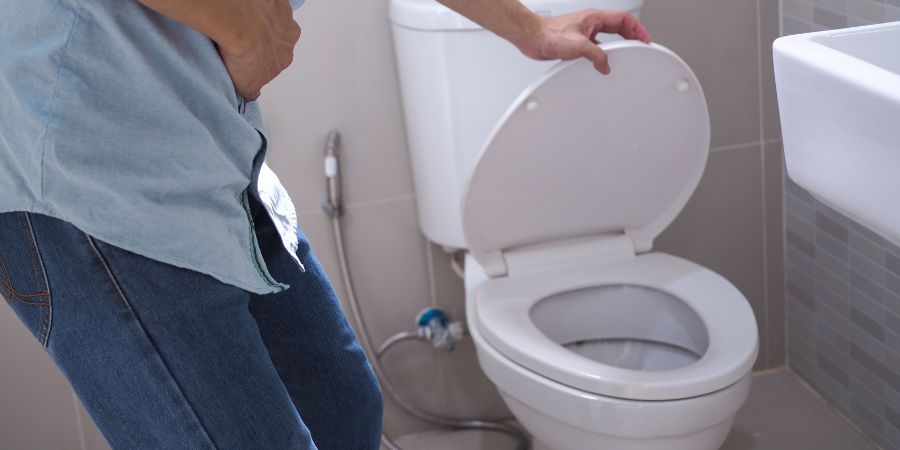Investing in a mattress is a significant decision, How to Deep Clean a Mattress. Regular cleaning is essential as mattresses can accumulate dust mites, dead skin, dirt, and other debris, especially if you have allergies, pets, or enjoy midnight snacks.
The good news is that mattress maintenance is simpler than you might think. Here are nine straightforward steps to keep your mattress clean and in top condition for years of comfortable sleep. Drawing on insights from experts like Ed Curry, president of Duxiana, and Neil Parikh, cofounder of Casper, here are some professional tips to help you care for your mattress and rest easy.
How to Deep Clean a Mattress
While you might already maintain your mattress well, occasional deep cleaning is a wise practice. Considering we spend about a third of our lives sleeping, giving your mattress a thorough clean ensures a fresh and hygienic sleeping environment. So, why not give it a shot?
In this straightforward guide, From vacuuming and deodorizing to stain removal, we’ve got you covered. Keep reading to discover how to give your mattress a deep clean and leave it feeling as good as new!
Consult the care guide
Begin by consulting the care guide for your mattress before diving into the cleaning process. Different mattresses may have specific recommendations from the manufacturer regarding cleaning methods. Look for any dos and don’ts to ensure you approach the cleaning appropriately. Additionally, check if your mattress is double or single-sided, as this will determine whether you can deep clean both sides or just the top.
Gather your cleaning supplies
Prepare the necessary cleaning supplies before starting the deep cleaning process.
Vacuum cleaner (preferably with an upholstery attachment)
Mild laundry detergent or dish soap
Baking soda
Cloth or sponge
Cold and lukewarm water
Wash your bedding and pillows
Remove all bedding and launder them in hot water if possible. Consider tumble-drying at a high temperature to eliminate any germs or bacteria on your sheets. This thorough cleaning ensures a cleaner and healthier sleeping environment when you put the bedding back on the mattress. Check care instructions to determine if your pillows are machine washable or if they have removable covers that can be washed separately.
Air out your mattress
After removing bedding, open windows in your bedroom to ventilate the room. Allowing fresh air to circulate around the mattress helps eliminate odors and refreshes the sleeping surface.
Vacuum your mattress
Use a vacuum cleaner with small circular motions over the entire mattress to lift dust, dirt, hair, and dead skin. If available, use an upholstery attachment for more effective vacuuming. Although not essential, it can make the process easier. For mattresses without stains, consider sprinkling a small amount of baking soda on the surface to neutralize odors.
Tackle any mattress stains
Address any stains promptly, ideally as soon as they occur, but recognize that immediate action may not always be possible.
How Often to Clean a Mattress
Regularly cleaning your mattress, ideally twice a year, not only enhances the quality of your sleep but also combats the accumulation of sweat, dust mites, and allergens that naturally build up over time. This routine maintenance isn’t just about cleanliness; it also serves to prevent pest infestations, ensuring your sleeping area remains fresh and hygienic.
The materials within your mattress undergo slow deterioration, prompting the need for replacement every 7-10 years. However, by incorporating a biannual cleaning regimen, you can slow down this breakdown process. This proactive approach helps extend the lifespan of your mattress’s layers and fibers, ultimately contributing to a healthier and more comfortable sleep experience.
How to Remove Stains From Your Mattress
The most effective method for eliminating mattress stains involves using a mild laundry detergent or dish soap mixed with lukewarm water. Carefully dab, avoiding rubbing, the stain with a cloth or sponge to lift it as much as possible.
It’s crucial to note that during the deep cleaning process, harsh chemicals or excessive moisture should be avoided as they can compromise the mattress’s integrity.
After treating stains or introducing any moisture to the mattress, allow it to thoroughly air dry before proceeding to the next steps or replacing your sheets.
How to Remove Sweat Stains from a Mattress:
Mix light laundry detergent or dish soap with lukewarm water.
Dab the mixture onto the sweat stain with a cloth or sponge until it fades.
How to Remove Urine Stains from a Mattress:
If dealing with urine stains, especially with young children:
Mix gentle laundry detergent or dish soap with lukewarm water.
Use wet paper towels to press into the stain, replacing the paper towel every few minutes for hygiene.
Continue dabbing at the stain until it is completely lifted. Note that urine stains may require more time and effort to remove.
When dealing with blood stains on a mattress, it’s crucial to use cold water as it breaks down the proteins in blood more effectively than warm water. Be cautious not to use excessive water, especially on memory foam mattresses, as it can damage the foam and fillings inside. Ensure that your cloth, towel, or sponge is only damp, not dripping wet, and allow the mattress to dry completely after stain removal.
For fresh blood stains:
Dish Soap Method:
Mix dish soap or light laundry detergent with cold water.
Dampen a cloth or sponge with this mixture.
Gently press into the affected area until the stain lifts.
For dried blood stains:
Baking Soda Method:
Rinse a cloth with cold water.
Dab the stain with the cloth.
Sprinkle baking soda over the stain.
Leave it for 30 minutes.
Rinse a cloth with cold water again.
Dab the stain until it lifts.
Repeat as necessary and let it dry.
Vacuum the mattress surface to remove baking soda once dry.
Vanish Method:
Rinse a cloth or sponge with cold water.
Press the cloth into the affected area.
Spray the Vanish solution onto the stain or sprinkle the cleaning powder over it.
Allow it to bubble for a few minutes.
When the solution stops bubbling, dab the stain with a cold damp cloth until it lifts.
Leave to dry, then vacuum the area.
Using these methods with cold water and avoiding excess moisture ensures effective blood stain removal while preserving the integrity of your mattress.
Conclusion
In conclusion, investing time in the regular and thorough cleaning of your mattress is a simple yet vital practice for ensuring a comfortable and hygienic sleep environment. By following these professional tips, including consulting your mattress’s care guide, gathering the right cleaning supplies, and incorporating deep cleaning practices like vacuuming and stain removal, you can significantly extend the lifespan of your mattress. Not only does regular cleaning enhance the quality of your sleep, but it also helps combat the accumulation of allergens, dust mites, and sweat, contributing to a healthier and more comfortable sleep experience. Whether you’re addressing common issues like sweat or urine stains, or dealing with more stubborn blood stains, the use of mild detergents, cold water, and careful drying techniques will effectively lift stains without compromising your mattress’s integrity. Embracing these practices, ideally performed twice a year, will not only maintain the cleanliness of your mattress but also contribute to a fresh and inviting sleeping space for years to come.




